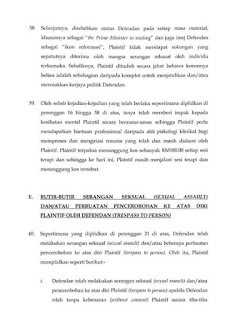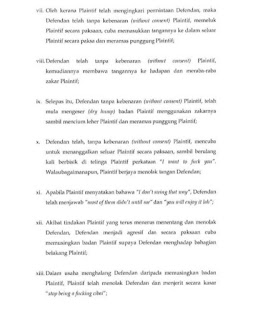$142 Billion U.S.–Saudi Strategic Arms Pact
I. Executive Summary
On 13 May 2025, the United States and the Kingdom of Saudi Arabia formalized a $142 billion defense-industrial framework, announced during former President Donald J. Trump’s strategic visit to Riyadh. Touted as the largest bilateral defense package in U.S. history, the accord underpins Washington’s recalibrated posture in the Middle East while bolstering Saudi Arabia’s Vision 2030 defense autonomy agenda.
The pact integrates high-technology procurement, capability transfer, and joint operational architecture, reinforcing Saudi ambitions to achieve force modernization, localized defense manufacturing, and strategic deterrence.
II. Structural Composition of the Defense Accord
The agreement is distributed across five primary modernization domains, each addressing a core aspect of future warfare and allied interoperability:
1. Aerospace Superiority & Strategic Airlift
Prime Contractors: Boeing, Lockheed Martin
Deliverables:
- F-15SA Fleet Modernization: AESA radar integration, advanced EW suite, and multi-role munitions compatibility
- Strategic Lift Assets: C-130J Super Hercules procurement for tactical mobility, logistics, and disaster response
- End User: Royal Saudi Air Force (RSAF)
2. Integrated Air & Missile Defense Systems
Prime Contractors: RTX (Raytheon), Northrop Grumman, Lockheed Martin
Deliverables:
- Patriot PAC-3 MSE Enhancement: Counter-missile performance upgrades, extended-range engagement capability
- AESA Radar Arrays: Integrated air picture and counter-UAV coverage enhancement
- Fire Control & C2 Nodes: System-level integration for threat tracking and synchronized response
- End Users: Ministry of Defense & Aviation (MODA), RSAF
3. Naval & Littoral Warfare Capability
Prime Contractors: General Dynamics, L3Harris, Boeing, Leidos
Deliverables:
- Harpoon Block II+ Missile Systems: Maritime anti-access / area denial (A2/AD) reinforcement
- Unmanned Surface and Subsurface ISR Platforms: Persistent maritime domain awareness
- Coastal Surveillance Grid: Real-time target tracking, naval base security integration
- End User: Royal Saudi Naval Forces (RSNF)
4. Ground Forces Transformation
Prime Contractors: General Dynamics Land Systems (GDLS), Oshkosh Defense, Palantir
Deliverables:
- 8x8 and MRAP Armored Mobility Platforms
- ISR-Equipped Border Security Systems: Drones, thermal imaging, sensor fusion
- Tactical Command Modules: Secure mobile C2 platforms for forward-deployed forces
- End Users: Royal Saudi Land Forces (RSLF), Saudi Border Guard
5. C4ISR, Cyber Defense & AI Fusion
Prime Contractors: Palantir Technologies, AWS Defense, Northrop Grumman, Booz Allen Hamilton
Deliverables:
- C4ISR Integration Framework: AI-enhanced battlefield awareness, predictive analytics
- Quantum-Resistant Encrypted Communications
- Cloud-Native Data Fusion Infrastructure: Inter-theater intelligence pipeline and real-time decision support
- End User: Saudi Armed Forces Cyber Command, MODA
III. Strategic Support Capabilities
Beyond primary armament and platforms, the agreement includes critical support enablers to ensure lifecycle sustainment and operational readiness:
6. Space-Based Assets & Early Warning
Prime Contractors: Lockheed Martin, SpaceX (via DoD facilitation), Northrop Grumman
Deliverables:
- Satellite-Based ISR Systems: Strategic surveillance, early warning, space domain situational awareness
- Ground Segment Infrastructure: Command uplinks, orbital tasking systems
7. Training, Doctrine & Sustainment
Prime Contractors: SAIC, CAE, Booz Allen Hamilton
Deliverables:
- Simulation-Based Warfighter Training: Aircrew, infantry, and staff officer curricula
- Maintenance, Repair & Overhaul (MRO): Forward and depot-level sustainment pipelines
- Doctrine Advisory Services: U.S.-aligned TTPs (Tactics, Techniques, Procedures)
- End User: Saudi Military Education & Training Authority
8. Commercial Offsets & Industrial Localization
Prime Contractors: GE, Honeywell, Raytheon Technologies, Saudi Arabian Military Industries (SAMI)
Deliverables:
- Co-Production Facilities & Local Assembly: Rotorcraft parts, avionics, defense electronics
- Workforce Transfer Programs: STEM training, defense logistics education
- Technology Licensing & IP Transfer
- End User: General Authority for Military Industries (GAMI), SAMI
IV. The F-35 Conundrum: Geostrategic Ambiguity
Despite Riyadh’s long-standing ambition to acquire the F-35 Lightning II, the aircraft remains outside the current framework:
- Israel’s Qualitative Military Edge (QME) remains a statutory constraint within U.S. FMS doctrine.
- Discussions are ongoing under Congressional oversight but no delivery commitments or clearances have been issued as of Q2 2025.
V. Contextualizing the $142 Billion Valuation
Much like the 2017 $110 billion Trump-era announcement (which realized only $34.6 billion in contracts), this package includes:
- Pipeline LOAs (Letters of Offer and Acceptance)
- Legacy MOUs rolled forward
- Projected FMS over a multi-year horizon
Analysts caution that the $142 billion figure is aspirational, not a confirmed contract ledger.
VI. Integration Within a $600 Billion Strategic Umbrella
The arms agreement forms a core pillar of a broader $600 billion U.S.–Saudi bilateral investment framework, which includes:
- $20B for AI data centers in Arizona and Texas
- $14.2B in GE turbine systems to rewire Riyadh’s energy grid
- $4.8B in Boeing commercial aircraft for Saudia and Riyadh Air
VII. Strategic & Geopolitical Implications
Force Interoperability: Reinforces joint U.S.–Saudi operational alignment across the Gulf, Red Sea, and Levant theaters
Deterrence Positioning: Counters Iranian influence; hardens Yemen frontier; hedges against non-state actors (e.g., Houthis)
Normalization Limbo: Riyadh maintains preconditioned stance on Palestine; no diplomatic breakthrough with Israel is embedded in the pact.
VIII. Risks, Oversight & Accountability
Conflict of Interest Probes: Persistent scrutiny over Trump-affiliated Gulf investments
Human Rights Concerns: Escalation in Yemen, internal repression, unresolved accountability for Khashoggi
Oversight Mechanisms: GAO review sought for offset integrity, defense job creation estimates, and timeline accountability
IX. Strategic Outlook: Executional Viability
This agreement signals a renewed defense-industrial alignment between Washington and Riyadh. However, its executional integrity hinges on:
- Congressional authorization cycles
- Regional escalation volatility
- Saudi defense-sector absorption capacity and sustainment architecture
Strategic Rating:
Watchlist — High Aspirational Value | Moderate-to-High Execution Risk






















